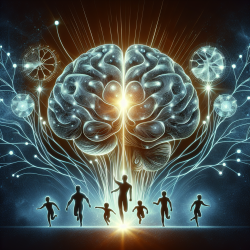As a speech-language pathologist deeply invested in data-driven decision-making, I find the research on neurofeedback for ADHD particularly compelling. The study titled Neurofeedback in ADHD: A qualitative study of strategy use in slow cortical potential training offers valuable insights into how different strategies can influence treatment outcomes. This blog aims to help practitioners enhance their skills by implementing these findings or encouraging further research.
Neurofeedback (NF) has garnered attention as a non-pharmacological treatment for ADHD, offering an alternative to traditional medication. This study delves into the qualitative aspects of NF, specifically focusing on Slow Cortical Potential (SCP) training. By examining the cognitive, emotional, and physiological strategies used by participants, the research provides a nuanced understanding of how different approaches can impact treatment efficacy.
Key Findings from the Study
The study identified 16 distinct strategies across four domains: cognitive, physiological, emotional, and unspecified. These strategies serve as vehicles to regulate mental arousal, a critical factor in NF training. Here are some key takeaways:
- Cognitive Strategies: These include focus, memory recall, and motivation. For example, participants used directed focus and visualization techniques to steer the object on the screen.
- Emotional Regulation: Strategies such as mindfulness and engaging emotionally charged thoughts were employed to achieve desired outcomes.
- Physiological Strategies: Breathing techniques and muscular relaxation were common, especially in the early stages of training.
- Unspecified Strategies: Some participants exhibited passivity or lack of insight into their strategies, highlighting the need for more tailored guidance.
Implications for Practitioners
The findings suggest that a heterogeneous array of strategies is used at varying levels of training compliance. Practitioners can leverage this knowledge to better tailor their interventions. For instance, highly compliant participants often used emotional regulation strategies more effectively, which could inform how instructions are given in clinical practice.
Moreover, the study identified three distinct strategy profiles: "State of Mind," "Manifest and Concrete," and "Unaware." Understanding these profiles can help practitioners predict which strategies might be more effective for individual clients. For example, participants in the "State of Mind" profile, who manipulated their mental state through focus and wakefulness, showed the most significant improvements in self-regulation and ADHD symptoms.
Encouraging Further Research
While this study offers valuable insights, it also opens the door for further research. Future studies should explore the impact of different NF protocols and feedback types on strategy use. Additionally, understanding the role of compliance and motivational factors can help refine NF training programs to achieve better outcomes.
In conclusion, this research provides a robust framework for enhancing NF interventions for ADHD. By incorporating these findings into practice, we can create more effective, individualized treatment plans that better serve our clients.
To read the original research paper, please follow this link: Neurofeedback in ADHD: A qualitative study of strategy use in slow cortical potential training.










